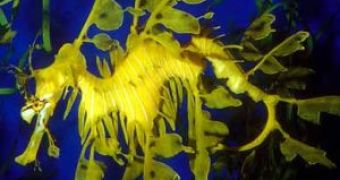This is the dream of many women: their men to see how it is to bear a pregnancy. Well, some fish females are not stupid at all! They already succeed in it.
We are talking about the family of seahorses, pipefishes and seadragons, called Syngnathidae ("joined jaws"). But genetics digging come to solve this great gender mystery in the animal world: how did male pregnancy evolve? Because we can see an example of male carrying the eggs and offspring in many fish, frog, bird species, but not male pregnancy!
Studies made by a team at Michigan State University in the gulf pipefish points that a gene already involved with kidney and liver function may have learned new tricks in the male womb, said April Harlin-Cognato, a biologist at Michigan State University, and her colleagues. "We're interested in the evolution of novelty and how novel traits evolve," said Biologist April Harlin-Cognato.
"Why is this the only fish that exhibits male pregnancy? It's one of the more difficult phenomena to explain in evolutionary biology, and we're wondering if it's a matter of old genes learning new tricks."
In all Syngnathidae, male accept eggs from the females, fertilize them and carry them in pouches, somewhat similar to marsupials' pouch. But this brood pouches have evolved into complex organs able to deliver food and protect the eggs. The research team found a new type of the gene that encodes a protein called astacin, which has many functions in bony fish. During the evolution, a gene can multiply, and the copies can take on different functions while the original continues to perform the initial functions.
However, this new gene, which the team dubbed "patristacin" in deference to its suspected fatherly functions, is not a copy, but more likely a second job for astacin. Perhaps in its early days, hundreds of millions of years ago, a patristacin gene likely assisted in kidney and liver function. It's possible that the gene was drafted into supporting the then-newfangled male brood pouch and became productive at its second job. "These researchers have made a strong case that this gene is not a new one, but an old gene that has taken on additional work," said Michael Beecher, a program director in NSF's Division of Integrative Organismal Biology.
"We think it was a case of 'genetic moonlighting,'" Harlin-Cognato said.
"Genes show you ancestry. They show you the overall family tree and can tell you when things took place during the evolution of a new structure. We're looking at the endpoint and trying to figure out its origin. It's like doing genetic archaeology."

 14 DAY TRIAL //
14 DAY TRIAL //